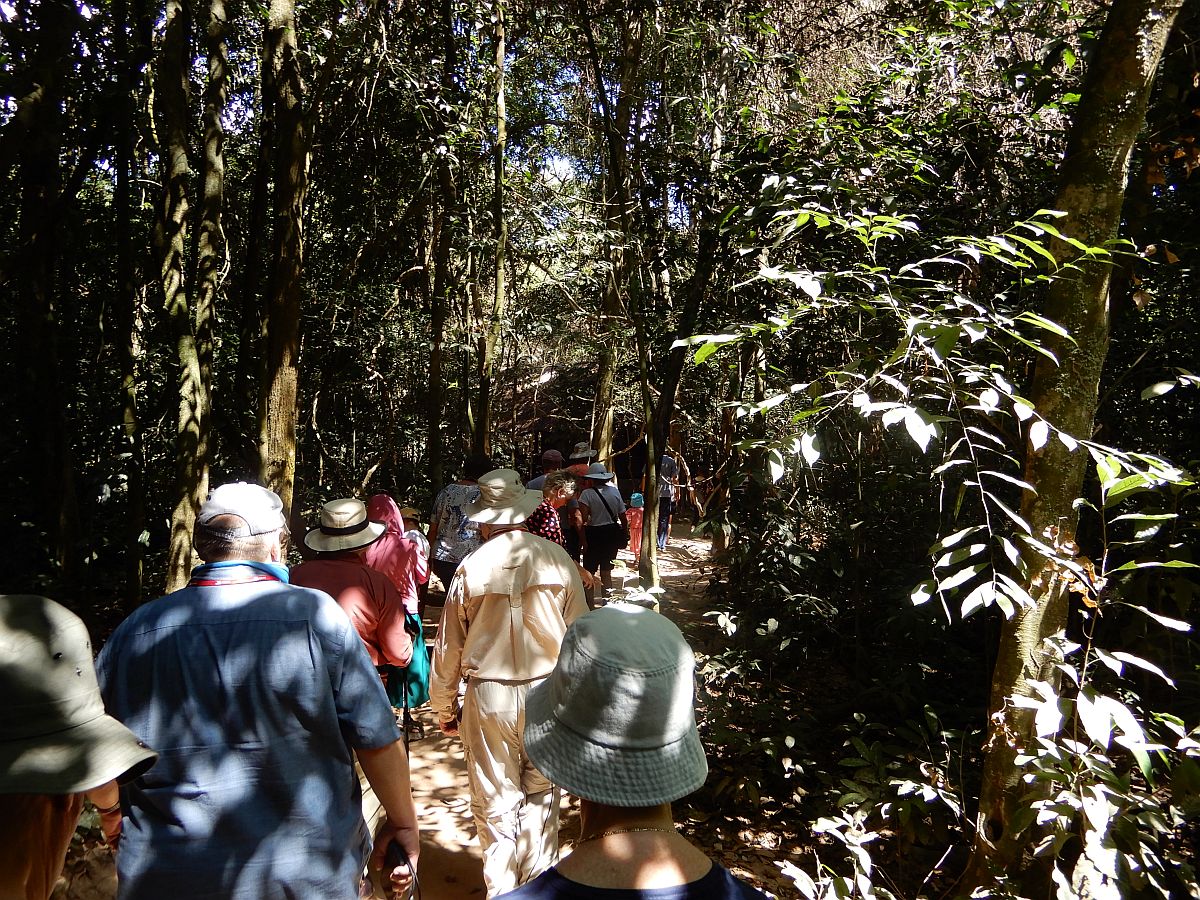
The first stop after leaving the ship, was at the Cu Chi tunnels. This incredible 75-mile network of secret tunnels, up to 30 feet below ground, was created by the Viet Cong to be their hidden living-space during the wars of the late 1960's; parts of it are now open to tourists such as ourselves. The entrances to the tunnels were very well hidden, making use of small trapdoors hidden under piles of leaves and often guarded by machine-gun installations in nearby anthills; anthills were also used to hide the air-inlet pipes that supplied the tunnels, and the chimneys that took away the smoke from their fires (they chimneys were packed with damp leaves that filtered out any visible smoke).
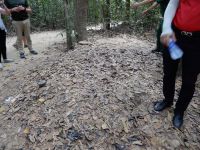 |
 |
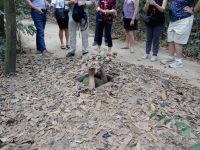 |
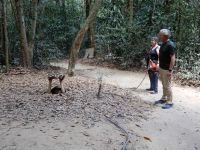 |
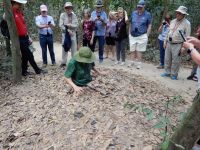 |
This pile of leaves ... |
... hides a trapdoor ... |
... which is just big enough ... |
... for our local guide to use ... |
... to emerge from the tunnels |
A few of the safer tunnels have been slightly widened to accommodate visiting tourists, but they were still a tight fit and there were few places where it was possible to stand upright, It is hard to imagine living in such a place, especially in the context of wartime terror.
The Americans, of course, desperately sought the Viet Cong during the conflict; in this, they were remarkably unsuccessful despite extensive carpet-bombing of the area, and the widespread use of Agent Orange to clear the vegetation. The Vietcong were well-hidden in the jungle, which they had widely booby-trapped, and used such simple but cunning tricks as wearing shoes that left footprints which faced backwards so that anybody trying to follow their tracks would simply be going in the wrong direction.
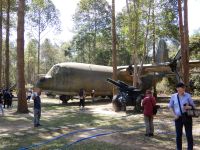 |
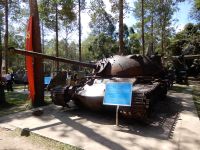 |
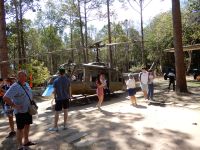 |
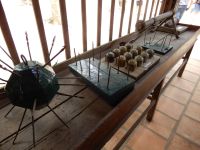 |
Relics of the war, left behind by the Americans ... |
... and by the Viet Cong |
||
Leaving the tunnels behind, and after an excellent lunch at a nearby restaurant, we continued to Ho Chi Minh City - which my brain still thinks of as Saigon - and checked into the Sheraton hotel. I had thought that first Hanoi and then Pnom Penh were crazily full of motor-bikes, but Ho Chi Minh city was an order of magnitude more crazy in this respect; luckily by now we were getting used to it!.
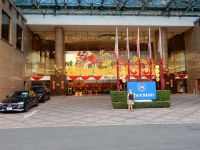 |
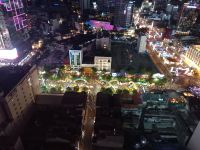 |
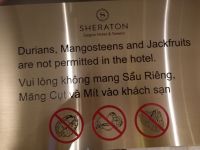 |
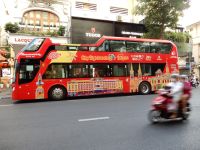 |
Our hotel in Ho CHi Minh City |
We had a wonderful view from our room |
Some of the rules of the hotel seemed rather strange |
The sightseeing buses looked rather familiar |
The Vietnamese use the same definition of New Year as do the Chinese, and were just reaching the end of their celebrations of the Year of the Dragon as we arrived. The fact that Debbie's birthday was on the same day made the celebrations seem all the more special, and we walked the streets of the city amongst the happy crowds, many of whom were dressed in their best costumes as they enjoyed the lavish decorations.
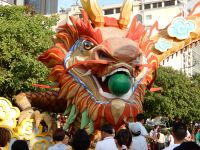 |
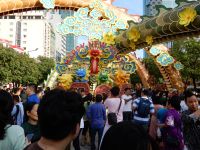 |
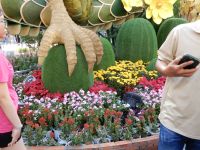 |
 |
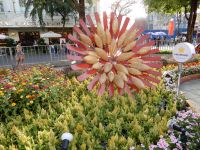 |
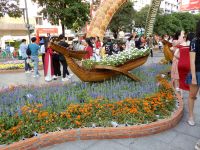 |
 |
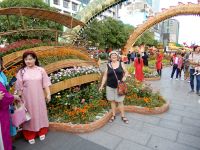 |
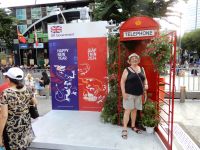 |
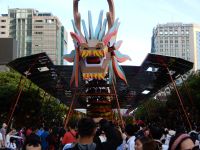 |
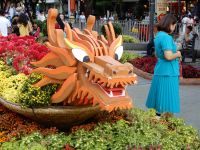 |
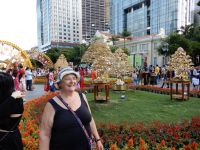 |
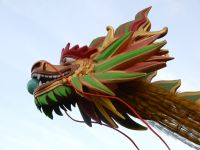 |
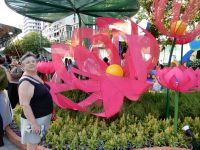 |
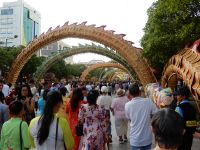 |
Wonderful celebrations of the Year of the Dragon - or were they celebrations of Debbie's birthday? |
||||
The next day was spent exploring Ho Chi Minh City by coach. The morning was largely centred on the history of the American occupation and associated siege by the Viet Cong, which I admit we did not find particularly interesting. This included a visit to the Presidential Palace which was used as the commend centre and war room during that period (I was interested to see their radio-communication equipment from that era, as I had myself used most of the items at some point during my Amateur Radio operator days).
In the afternoon we went to a small but very busy Chinese Buddhist temple, which was fascinating with its beautiful altars and the continued chanting of the monks. People who wished to commemorate a loved one would purchase an incense stick which, wound into a spiral cone shape and hung from the temple ceiling, would burn for up to 2 weeks. Together with all the scented candles, they made the atmosphere in the temple very powerful.
In the evening we were taken to dinner at a gourmet Vietnamese restaurant, which was absolutely magnificent! With magnificent food and perfect service, accompanied by quiet music playing in the background from a live orchestra around an indoor fish-pool, it was a simply wonderful end to our time in Vietnam.
The following morning the coach took us on the short journey to the airport, where the check-in went surprisingly smoothly, and courtesy of Vietnam Airlines we were soon on our way to Bangkok, the capital of Thailand ...
| FlickR album of these photos | Bangkok, capital of Thailand | A page of Temple photos | ||
| Go to Allan's Page | Our Home Page | Holidays Home Page | British Canals Page | Go to Deb's Page |
All pictures on this site are © Allan Jones unless otherwise stated.